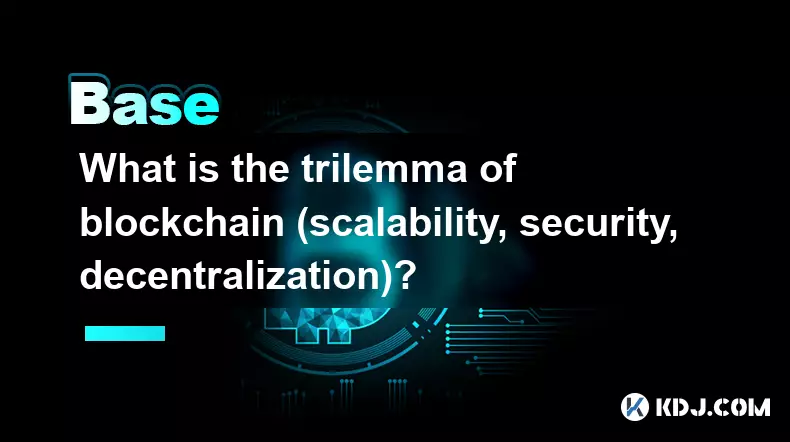-
 bitcoin
bitcoin $110047.851143 USD
-1.37% -
 ethereum
ethereum $3727.617466 USD
-1.30% -
 tether
tether $1.000961 USD
-0.05% -
 bnb
bnb $1114.045467 USD
1.72% -
 xrp
xrp $2.343280 USD
0.14% -
 solana
solana $174.674876 USD
-5.85% -
 usd-coin
usd-coin $0.999999 USD
0.02% -
 tron
tron $0.311757 USD
-2.44% -
 dogecoin
dogecoin $0.183678 USD
-3.76% -
 cardano
cardano $0.627109 USD
-2.07% -
 ethena-usde
ethena-usde $1.000300 USD
0.15% -
 hyperliquid
hyperliquid $36.865760 USD
-2.74% -
 chainlink
chainlink $16.968918 USD
-1.48% -
 stellar
stellar $0.318159 USD
0.47% -
 bitcoin-cash
bitcoin-cash $500.637224 USD
-1.56%
What is the "flippening" in reference to Bitcoin and Ethereum?
Ethereum's rise in market cap could challenge Bitcoin's dominance, driven by its utility in DeFi, NFTs, and staking, sparking debate over the future of crypto leadership.
Oct 12, 2025 at 01:00 pm

Understanding the Flippening Concept
1. The term 'flippening' refers to a hypothetical scenario in the cryptocurrency market where Ethereum surpasses Bitcoin in terms of market capitalization. This shift would mark a significant change in investor sentiment and network dominance.
2. Market cap is calculated by multiplying the total circulating supply of a cryptocurrency by its current price. Bitcoin has historically held the top position, but Ethereum's ecosystem growth has fueled speculation about a potential flip.
3. Advocates of the flippening believe that Ethereum’s utility through smart contracts, decentralized applications (dApps), and its role in DeFi and NFTs gives it stronger long-term fundamentals compared to Bitcoin’s primarily store-of-value proposition.
4. Critics argue that Bitcoin’s scarcity, brand recognition, and status as digital gold make it unlikely for Ethereum to overtake it permanently, even if temporary flips occur during bullish cycles.
5. The discussion around the flippening intensified during Ethereum’s transition to proof-of-stake and periods of high network activity, when transaction volumes and developer interest surged on the Ethereum blockchain.
Key Drivers Behind the Flippening Debate
1. Ethereum’s upgrade roadmap, including improvements like EIP-1559 and the Merge, has reduced issuance and introduced deflationary mechanics, making ETH more attractive as an asset with monetary policy constraints.
2. The rise of layer-2 scaling solutions such as Arbitrum and Optimism has enhanced Ethereum’s throughput and lowered fees, increasing adoption and reinforcing its position as the leading platform for dApp deployment.
3. Institutional interest in Ethereum-based financial instruments, such as staking derivatives and ETF proposals, signals growing confidence in its infrastructure and regulatory clarity relative to other altcoins.
4. Bitcoin remains dominant in macro portfolios due to its fixed supply and perceived neutrality, but Ethereum captures more developer mindshare, which some analysts consider a leading indicator of future value accrual.
5. Network effects play a crucial role; Ethereum hosts the majority of decentralized exchanges, lending protocols, and tokenized assets, creating a self-reinforcing ecosystem that attracts users and capital.
Economic and Technical Indicators Influencing the Race
1. On-chain metrics such as active addresses, transaction volume, and gas spent show Ethereum often outperforms Bitcoin during peak usage periods, reflecting higher real-world engagement.
2. Ethereum’s ability to generate yield through staking provides an income incentive not available with Bitcoin, altering the investment calculus for holders seeking returns beyond price appreciation.
3. Supply dynamics differ significantly: Bitcoin has a hard cap of 21 million coins, while Ethereum has no fixed supply limit post-Merge, though net issuance has been low and sometimes negative due to fee burning.
4. Exchange reserves of both assets are monitored closely; declining ETH balances on exchanges suggest accumulation behavior, whereas stable or rising BTC exchange holdings may indicate short-term trading pressure.
5. Hash rate and security spending remain much higher for Bitcoin, underscoring its resilience as a decentralized settlement layer, though this does not directly translate into application-level utility.
Frequently Asked Questions
What would trigger the flippening to actually happen? A sustained period of higher demand for ETH driven by institutional inflows, successful scalability upgrades, and increased usage in global finance could push Ethereum’s market cap above Bitcoin’s. Major catalysts might include approval of spot ETH ETFs or widespread adoption of Ethereum-based central bank digital currency experiments.
Has the flippening ever occurred temporarily? No official flippening has taken place based on market cap, but certain valuation models—such as fully diluted valuation during specific price movements—have shown Ethereum briefly ahead under narrow conditions. These instances were not sustained nor recognized as definitive flips.
Does the flippening mean Ethereum is a better investment than Bitcoin? Not necessarily. The flippening reflects market structure and adoption trends rather than inherent superiority. Investors focused on stability may still prefer Bitcoin, while those seeking exposure to programmable money may favor Ethereum.
How do developers view the flippening debate? Many in the Ethereum community see the flippening as a natural evolution given their platform’s functionality. Bitcoin developers typically dismiss the concept, emphasizing decentralization, simplicity, and sound monetary policy as more important than market cap rankings.
Disclaimer:info@kdj.com
The information provided is not trading advice. kdj.com does not assume any responsibility for any investments made based on the information provided in this article. Cryptocurrencies are highly volatile and it is highly recommended that you invest with caution after thorough research!
If you believe that the content used on this website infringes your copyright, please contact us immediately (info@kdj.com) and we will delete it promptly.
- XRP Price Prediction: Weekend Rollercoaster or Rally?
- 2025-10-12 08:45:16
- Bittensor (TAO): Super Bullish Signals Point to Potential 2x Rally
- 2025-10-11 10:25:12
- Silver Price Correction: Navigating the Dip & Identifying Key SEO Keywords
- 2025-10-11 10:25:12
- Decoding Crypto Trends: Bittensor's Bull Run, Cardano's Dip, and LivLive's Presale Buzz in 'Uptober 2025'
- 2025-10-12 08:45:16
- MoonBull: The Crypto Meme Coin Promising 1000x Gains?
- 2025-10-11 10:30:01
- Crypto Payroll Revolution: Stablecoins, Altcoins, and the Future of Salary Payments
- 2025-10-11 10:30:01
Related knowledge

What does it mean for code to be "open source" in crypto?
Oct 12,2025 at 01:54pm
Understanding Open Source in the Cryptocurrency Ecosystem1. In the context of cryptocurrency, open source refers to software whose code is publicly ac...

What is the purpose of a "testnet"?
Oct 12,2025 at 09:01am
Understanding the Role of Testnets in Blockchain Development1. A testnet serves as a parallel version of a blockchain network, designed specifically f...

What is the difference between single-collateral and multi-collateral Dai?
Oct 12,2025 at 05:18pm
Understanding Single-Collateral Dai1. Single-Collateral Dai (SCD) was the original version of the Dai stablecoin launched by MakerDAO in 2017. It allo...

What is "EIP-1559" and how did it change Ethereum?
Oct 12,2025 at 03:00am
Understanding EIP-1559 and Its Core Mechanism1. EIP-1559 is a protocol upgrade introduced to the Ethereum blockchain as part of the London hard fork i...

What is the trilemma of blockchain (scalability, security, decentralization)?
Oct 11,2025 at 10:36am
Understanding the Blockchain TrilemmaThe blockchain trilemma is a concept that highlights the inherent challenge in simultaneously achieving three cor...

What is the difference between Web2 and Web3?
Oct 11,2025 at 03:19pm
Understanding the Structural Shift from Web2 to Web31. Web2 is characterized by centralized platforms where large corporations control user data, cont...

What does it mean for code to be "open source" in crypto?
Oct 12,2025 at 01:54pm
Understanding Open Source in the Cryptocurrency Ecosystem1. In the context of cryptocurrency, open source refers to software whose code is publicly ac...

What is the purpose of a "testnet"?
Oct 12,2025 at 09:01am
Understanding the Role of Testnets in Blockchain Development1. A testnet serves as a parallel version of a blockchain network, designed specifically f...

What is the difference between single-collateral and multi-collateral Dai?
Oct 12,2025 at 05:18pm
Understanding Single-Collateral Dai1. Single-Collateral Dai (SCD) was the original version of the Dai stablecoin launched by MakerDAO in 2017. It allo...

What is "EIP-1559" and how did it change Ethereum?
Oct 12,2025 at 03:00am
Understanding EIP-1559 and Its Core Mechanism1. EIP-1559 is a protocol upgrade introduced to the Ethereum blockchain as part of the London hard fork i...

What is the trilemma of blockchain (scalability, security, decentralization)?
Oct 11,2025 at 10:36am
Understanding the Blockchain TrilemmaThe blockchain trilemma is a concept that highlights the inherent challenge in simultaneously achieving three cor...

What is the difference between Web2 and Web3?
Oct 11,2025 at 03:19pm
Understanding the Structural Shift from Web2 to Web31. Web2 is characterized by centralized platforms where large corporations control user data, cont...
See all articles










































































